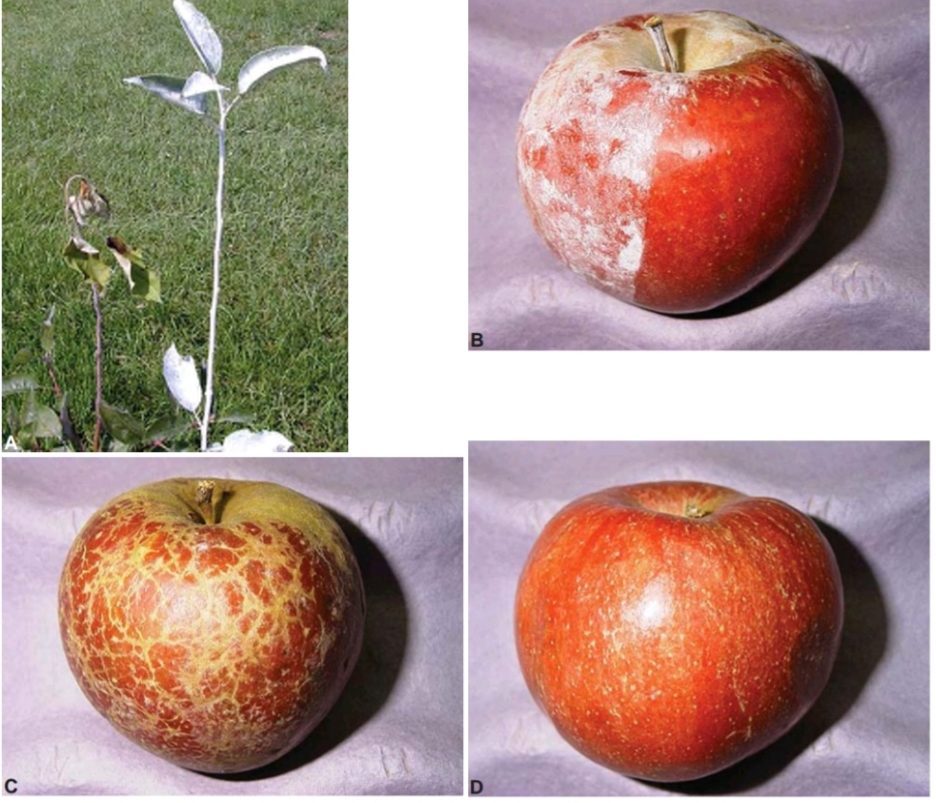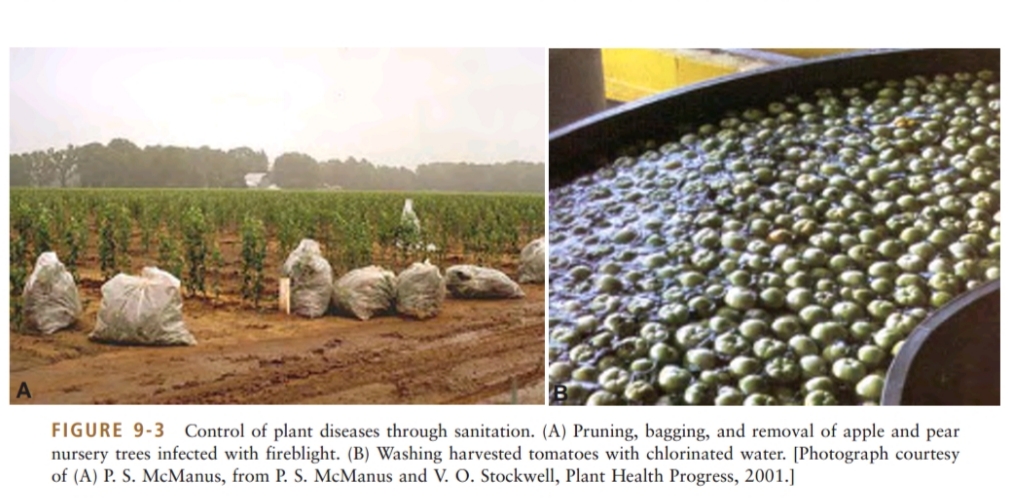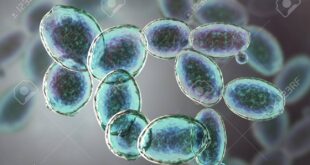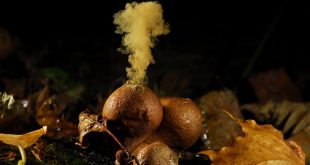Plants are the vital element of Environment. Like men and animals, plants are not free from disease. As they have diverse and significant rules in our existence in this earth, scientists are concerned about them specially at their danger. So, to keep plants free from pathogens or diseases the word ‘plant pathology’ emerged. And so the issue disease control is prioritised.
Plant Disease
A plant disease is usually defined as abnormal growth and/or dysfunction of a plant. Diseases are the result of some disturbance in the normal life process of the plant.
Diseases may be the result of living and/or non-living causes. Biotic diseases are caused by living organisms (e.g., fungi, bacteria, and viruses). Abiotic diseases are caused by non-living environmental conditions, (e.g., soil compaction, wind, frost, soil salt damage, and girdling roots).

PLANT DISEASE CONTROL
Best safe and secure cloud storage with password protection
Get Envato Elements, Prime Video, Hotstar and Netflix For Free
Best Money Earning Website 100$ Day
#1 Top ranking article submission website
In addition to being intellectually interesting and scientifically justified, the study of the symptoms, causes, and mechanisms of development of plant diseases has an extremely practical purpose: it allows for the development of methods to combat plant diseases. So, control increases the quantity and improves the quality of plant products available for use. Methods of control vary considerably from one disease to another, depending on the kind of pathogen, the host, the interaction of the two, and many other variables. In controlling diseases, plants are generally treated as populations rather than as individuals, although certain hosts (especially trees, ornamentals, and, sometimes, other virus-infected plants) may be treated individually. With the exception of trees,
however, the damage or loss of one or a few plants is usually considered insignificant. Control measures are generally aimed at saving the populations rather than a few individual plants.
Basic principles of disease control
Control strategies can be divided into two groups based on their effect on the development of resistance to the control measure by the pathogen:
- Eradicative control measures
Designed to eliminate the entire pathogen population. Examples: pesticides, vertical or complete resistance.
These tend to select for resistant variants of the pathogen. Why? All individuals are affected, so the pathogen must adapt or die.
2. Management control measures
Designed to reduce the pathogen population by destroying a portion of the population. Examples: horizontal or partial resistance, antagonism, cultural practices, quarantine.
These do not apply heavy selection pressure to the pathogen. Why? Portions of the pathogen population remain unaffected, no pressure to adapt.* Of the two, we prefer to use management strategies.
Disease control
There are four basic type of control measures.
a. Legislative and Regulatory control
b. Cultural control (includes physical control)
c. Chemical control
d. Biological control
we will discuss here above all except biological control.
Legislative and Regulatory control
Quarantines and Inspections
When plant pathogens are introduced into an area in which host plants have been growing in the absence of the pathogen, such introduced pathogens may cause much more catastrophic epidemics than the existing endemic pathogens. This happens because plants that develop in the absence of a pathogen have no opportunity to select resistance factors specific against the pathogen and are, therefore, unprotected and extremely vulnerable to attack.
Also, no microorganisms antagonistic or competing with the pathogen are likely to be present, while, on the other hand, the pathogen finds a large amount of available susceptible tissue on which it can feast and multiply unchecked.
Some of the worst plant disease epidemics, e.g., the downy mildew of grapes in Europe and the bacterial canker of citrus, chestnut blight, Dutch elm disease, and soybean cyst nematode in the United States, are all diseases caused by pathogens that were introduced from abroad.
The prevention of pathogens entering into new regions is known as exclusion, and is achieved by quarantine or by treating propagating material (elimination) before its introduction. If an outbreak of a disease occurs in a new area, efforts are made to eradicate the pathogen from the area.
Quarantine regulations govern the interstate, and even intrastate, sale of nursery stock, tubers, bulbs, seeds, and other propagative organs, especially of certain crops such as potatoes and fruit trees. The movement and sale of such materials within and between states are controlled by the regulatory agencies of each state.
Crop Certification
Several voluntary or compulsory inspection systems are in effect in various states in which appreciable amounts of nursery stock and potato seed tubers are produced. Growers interested in producing and selling disease-free plants submit to a voluntary inspection or indexing of their crop in the field and in storage by the state regulatory agency, experiment station personnel, or others. If, after certain procedures recommended by the inspecting agency are carried out, the plant material is found to be free of certain, usually virus, diseases, the inspecting agency issues a certificate indicating that the plants are free from these specific diseases, and the grower may then advertise and sell the plant material as disease free — at least from the diseases for which it was tested.
Evasion or Avoidance of Pathogen
For several plant diseases, control depends largely on attempts to evade pathogens. For example, bean anthracnose, caused by the fungus Colletotrichum lindemuthianum, and the bacterial blights of bean, caused by the bacteria Xanthomonas phaseoli and Pseudomonas phaseolicola, are transmitted through the seed.In most areas where beans are grown, at least a portion of the plants and the seeds become infected with these pathogens. However, in the dry, irrigated regions of the western United States, the conditions of low humidity are unsuitable for these pathogens and therefore the plants and their seeds are more likely to be free of them. Using western-grown seeds free of these pathogens is the main recommendation for control of these diseases.
In many cases, a susceptible crop is planted at a great enough distance from other fields containing possibly diseased plants so that the pathogen would not likely infect the crop. This type of crop isolation is practiced mostly with perennial plants, such as peach orchards isolated from chokecherry shrubs or trees infected with the X-disease phytoplasma.
Growers carry out numerous activities aimed at helping the host evade the pathogen.Such activities include:
- vigorous seed
- selecting proper (early or late) planting dates and proper sites
- maintaining proper distances between fields and between rows and plants
- planting wind break or trap crops
- planting in well drained soil
- using proper insect and weed control
All these practices increase the chances that the host will remain free of the pathogen or at least that it will go through its most susceptible stage before the pathogen reaches the host.
Use of Pathogen-Free Propagating Material
When a pathogen is excluded from the propagating material (seed, tubers, bulbs, nursery stock) of a host, it is often possible to grow the host free of that pathogen
for the rest of its life.There is absolutely no question that every host plant and every crop grow better and produce a greater yield if the starting propagating material is free of pathogens, or at least free of the most important pathogens.
Pathogen-Free Seed
Seed that is free of fungal, bacterial, and some viral pathogens is usually obtained by growing the crop and producing the seed in-
(1) an area free of or isolated from the pathogen,
(2) an area not suitable for the pathogen (e.g., the arid western regions of the United States where bean seed is produced usually free of anthracnose and bacterial blights)
(3) an area not suitable for the vector of the pathogen (e.g., the northern or high altitude fields where aphids, the vectors of many viruses, are absent or rare)
Pathogen-Free Vegetative Propagating Materials
Vegetative propagating material free of pathogens that are distributed systemically throughout the plant (viruses, viroids, mollicutes, fastidious bacteria, ands some wilt-inducing fungi and bacteria) is obtained from mother plants that had been tested and shown to be free of the particular pathogen or pathogens.
To ensure continuous production of pathogen-free buds, grafts, cuttings, rootstocks, and runners of trees, vines, and other perennials, the mother plant is indexed for the particular pathogen at regular (1- to 2-year) intervals.
Exclusion of Pathogens from Plant Surfaces by Epidermal Coatings
Successful results at controlling diseases of above ground parts of plants have been obtained in experiments in which the plants were sprayed with compounds that form a continuous film or membrane on the plant surface and inhibit contact of the pathogen with the host and penetration of the host.

Cultural Control
Cultural method for disease control refers to those growing methods that reduce the rate of pathogen levels or reduce the rate of disease development. These include:
- Host eradication
- Crop rotation
- Sanitation
- Improving plant growing conditions
- Creating conditions unfavorable to pathogens
- Polyethylene mulching
- Trickle irrigation
- Eco-fallow
- Reduced tillage farming
Host Eradication
When a pathogen has been introduced into a new area despite a quarantine, a plant disease epidemic frequently follows. To prevent such an epidemic, all the host plants infected by or suspected of harboring the pathogen may have to be removed and burned. This eliminates the pathogen and prevents greater losses from the spread of the pathogen to additional plants.
Crop Rotation
Soil borne pathogens that infect plants of one or a few species or even families of plants can sometimes be reduced in the soil by planting, for 3 or 4 years, crops belonging to species or families not attacked by the particular pathogen. Satisfactory control through crop rotation is possible with pathogens that are soil invaders, i.e., survive only on living plants or only as long as the host residue persists as a substrate for their saprophytic existence.
Sanitation
Sanitation consists of all activities aimed at eliminating or reducing the amount of inoculum present in a plant, a field, or a warehouse and at preventing the spread of the pathogen to other healthy plants and plant products.
Thus, plowing under infected plants after harvest, such as leftover infected fruit, stems, tubers, or leaves, helps cover the inoculum with soil and speeds up its disintegration (rotting) and concurrent destruction of most pathogens carried in or on them.
Pruning infected plants (Fig. 9-3A) or infected or dead branches and then removing infected fruit and any other plant debris that may harbor the pathogen help reduce the inoculum and do not allow the pathogen to grow into still healthy parts of the tree.
In some parts of the world, infected crop debris of grass seed and rice crops is destroyed by burning, which reduces or eliminates the surface inoculum of several pathogens.

Creating Conditions Unfavorable to the Pathogen
Stored products should be aerated properly to hasten the drying of their surfaces and inhibit germination and infection by any fungal or bacterial pathogens present on them. Similarly, spacing plants properly in the field or greenhouse prevents the Theatre of high-humidity conditions on plant surfaces and inhibits infection by certain pathogens, such as Botrytis and Peronospora tabacina. Good soil drainage also reduces the number and activity of certain oomycete pathogens (e.g., Pythium) and nematodes and may result in significant disease control. The appropriate choice of fertilizers or soil amendments may also lead to changes in the soil pH, which may unfavorably influence the development of the pathogen. Flooding fields for long periods or dry fallowing may also reduce the number of certain pathogens in the soil (e.g., Fusarium, Sclerotinia sclerotiorum, and nematodes) by inducing starvation, lack of oxygen, or desiccation.
In the production of many crops, particularly containerized nursery stock, using composted tree bark in the planting medium has resulted in the successful control of diseases caused by several soilborne pathogens.
Polyethylene Traps and Mulches
Many plant viruses, such as cucumber mosaic virus, are brought into crops, such as peppers, by airborne aphid vectors. When vertical, sticky, yellow polyethylene sheets are erected along the edges of susceptible crops, a considerable number of aphids are attracted to and stick to the plastic. This is done primarily to trap and monitor incoming insects, but to some extent it also reduces the amount of virus inoculum reaching the crop. However, if reflectant aluminum or black, whitish-gray, or colored polyethylene sheets are used as mulches between the plants or rows in the field, incoming aphids, thrips, and possibly other insect vectors are repelled and misled away from the field. As a result, fewer virus carrying vectors land on the plants and fewer plants become infected with the virus (Fig. 9-6). Reflectant mulches, however, cease to function as soon as the crop canopy covers them.
Chemical control
Chemical Methods that Eradicate or Reduce the Inoculum
Chemical pesticides are generally used to protect plant surfaces from infection or to eradicate a pathogen that has already infected a plant. A few chemical treatments, however, are aimed at eradicating or greatly reducing the inoculum before it comes in contact with the plant. They include:
- Soil treatments (such as fumigation)
- Disinfestation of warehouses
- Sanitation of handling equipment
- Control of insect vectors of pathogens
Soil treatments with chemicals
Soil to be planted with vegetables,strawberries, ornamentals, trees, or other high-value crops, such as tobacco, is frequently treated with chemicals for control primarily of nematodes but occasionally also of soilborne fungi, such as Fusarium and Verticillium, weeds, and bacteria. Certain fungicides are applied to the soil dusts, liquid drenches, or granules to control damping-off, seedling blights, crown and root rots, and other diseases. In fields where irrigation is possible, the fungicide is sometimes applied with the irrigation water, particularly in sprinkler irrigation. Fungicides used for soil treatments include metalaxyl, diazoben, pen tachloronitrobenzene (PCNB), captan, and chloroneb, although the last two are used primarily as seed treatments. Most soil treatments, however, are aimed at controlling nematodes, and the materials used are volatile gases or produce volatile gases (fumigants) that penetrate the soil throughout (fumigate). Some nematicides, however, are not volatile but, instead,dissolve in soil water and are then distributed through the soil.
Fumigation
The most promising method of controlling nematodes and certain other soilborne pathogens and pests in the field has been through the use of chemicals usually called fumigants. Some of them, including chloropicrin, methyl bromide, dazomet, and metam sodium, either volatilize as they are applied to the soil or decompose into gases in the soil. These materials are general purpose preplant fumigants; they are effective against a wide range of soil microorganisms, including nematodes, many fungi, insects, certain bacteria, and weeds.Contact nematicides, such as fensulfothion, carbofuran, ethoprop, and aldicarb, are of low volatility, are effective against nematodes and insects, and can be applied before and after planting of many crops that are tolerant to these chemicals.
Dis-infestation of Warehouses
Stored products can be protected from becoming infected by pathogens left over in the warehouse from previous years by first cleaning thoroughly the storage rooms and by removing and burning the debris. The walls and floors are washed with bleach, a copper sulfate solution (1 pound in 5 gallons of water), or some other sanitizing agent. Warehouses that can be closed airtight and in which the relative humidity can be kept at nearly 100% while the temperature is between 25 and
30°C can be fumigated effectively with chloropicrin (tear gas) used at 1 pound per each 1,000 cubic feet. In all cases the fumigants should be allowed to act for at least 24 hours before the warehouse doors are opened for aeration.
Control of Insect Vectors
When the pathogen is introduced or disseminated by an insect vector, control of the vector is as important as, and sometimes easier than, the control of the pathogen itself. Application of insecticides for the control of insect carriers of fungus spores and bacteria has been fairly successful and is a recommended procedure in the control of several such insect-carried pathogens.In the case of viruses, mollicutes, and fastidious bacteria, however, of which insects are the most important disseminating agents, insect control has been helpful in controlling the spread of their diseases only when it has been carried out in the area and on the plants on which the insects overwinter or feed before they enter the crop. Controlling such diseases by killing the insect vectors with insecticides after they have arrived at the crop has seldom proved adequate.
Whatever we do to control plant diseases, we have to keep in mind environmental safety first.
Another article related this will be published soon.
Revised by
- Somudro Mahbub Nasir on 10 July, 2021
Best safe and secure cloud storage with password protection
Get Envato Elements, Prime Video, Hotstar and Netflix For Free
 Plantlet The Blogging Platform of Department of Botany, University of Dhaka
Plantlet The Blogging Platform of Department of Botany, University of Dhaka






Your article gave me a lot of inspiration, I hope you can explain your point of view in more detail, because I have some doubts, thank you.